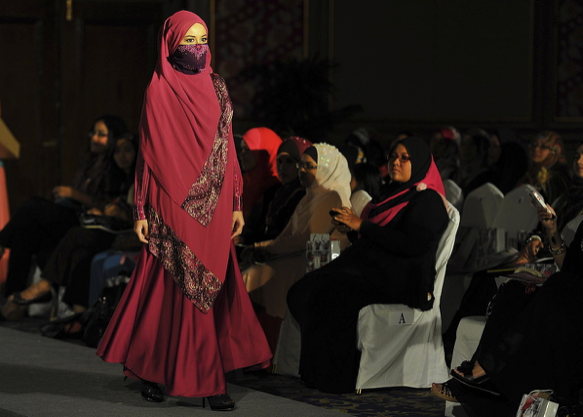AMANI’S offers the latest in Arab fashion online

Why do Arab Women Love Wearing Hijabs?
For Arabic women, wearing a headscarf is a kind of defiance against norms of feminine beauty that require more visibility. This school of thought contends that eliminating clothing for the sake of the male gaze does not imply liberty.
According to studies, hijab-wearing women remark that employers must deal with them based on their qualifications rather than their appearance and that the hijab, as a result, levels the playing field. On the other hand, women in Western nations discover that wearing a head covering makes it more difficult to land a job.
Finally, for certain women, wearing a hijab is a matter of practicality. It can minimize negative remarks about women out in public and incidences of abuse on the streets and at the workplace.
Coverings like scarves, veils, and body coverings of various colors and shapes were used in many civilizations even before Islam emerged in the Arab World in the 7th century (which includes present-day United Arab Emirates and Saudi Arabia). Head coverings are still used in numerous religions, including Orthodox Judaism and Catholicism. Islam has evolved to become one of the main world religions.
Veiling practices impacted others as they expanded from the Middle East to Saharan and Sub-Saharan Africa, Central Asia, and many other civilizations around the Arabian Sea. However, certain Islamic countries, such as Iran, have just lately begun to mandate all women to wear the veil, known in Iran as the chador, which covers the whole body.
Opponents and critics of the Arab veiling practice claim that women are often compelled to cover their heads and bodies and do not choose to wear the veil. Many daughters of Muslim immigrants in the West, on the other hand, say that the veil represents devotion and piety and that they chose to wear it. It is a matter of religious identification and self-expression for them.
Headscarves Come in a Variety of Styles.
The hijab is a generic term for several identical headscarves. It is the most often worn veil in the Western world. These veils are made up of one or two scarves that cover the entire head and neck. Outside of the West, many Muslim women in the Arab countries and elsewhere wear this traditional veil.
The niqab covers the whole body, head, and face, although there is a gap for the eyes. The two major types of niqabs are the half-niqab, which comprises of a headpiece and facial veil that exposes the eyes and portion of the forehead, and the full, or Gulf, niqab, which exposes just the eyes via a small slit. Although these veils are worn by Muslims throughout the world, they are particularly widespread in the Gulf States. The niqab has sparked much discussion in Europe. Some politicians have pushed for its prohibition, while others believe it hinders communication or raises security issues.
The chador is a full-length shawl that is tied at the neck with a hand or a clip or pin. It conceals the head and body but exposes the face entirely. Chadors are most often seen in the Middle East, particularly in Iran.
The burqa is a full-coverage veil. The wearer’s whole face and torso are concealed, and vision is provided through a mesh screen over the eyes. It’s particularly popular in Afghanistan and Pakistan.
Without a doubt, Amani’s is the finest online store for high-quality fashionable hijab from the United Arab Emirates. That is what Amani’s guarantee. It has one mission: to provide you with high-quality, stylish yet modest clothes at a reasonable price.
Amani’s offers the most popular Arab fashion from the UAE. They have a large range of Hijabs for all occasions, as well as Boy’s Thobes, Abayas, and other Arabic apparel and accessories.






The Dodgers have taken a strong Giants pitching team for some runs, which will inspire them with plenty of confidence. However, they will be up against a struggling starting pitcher in Ch